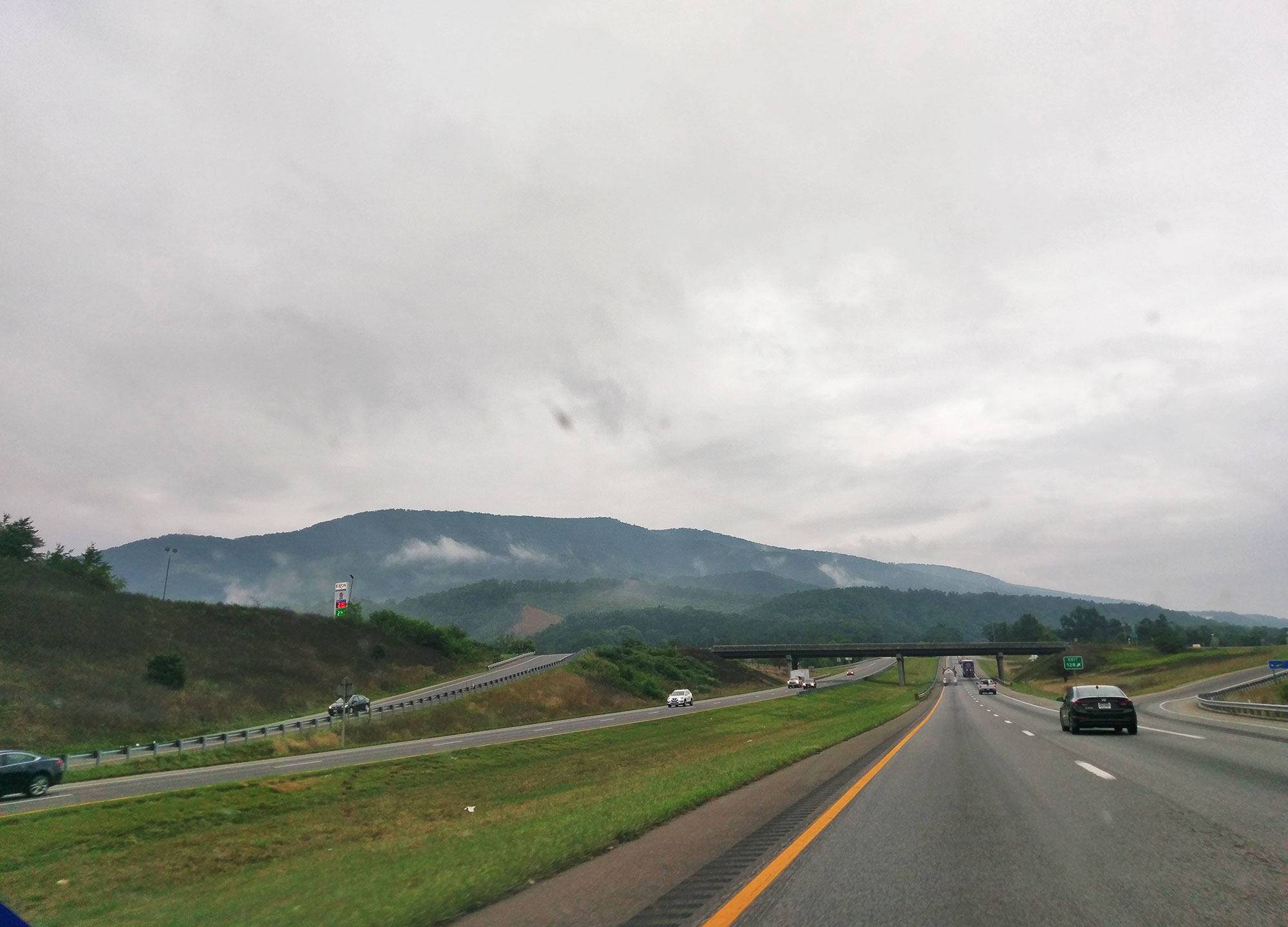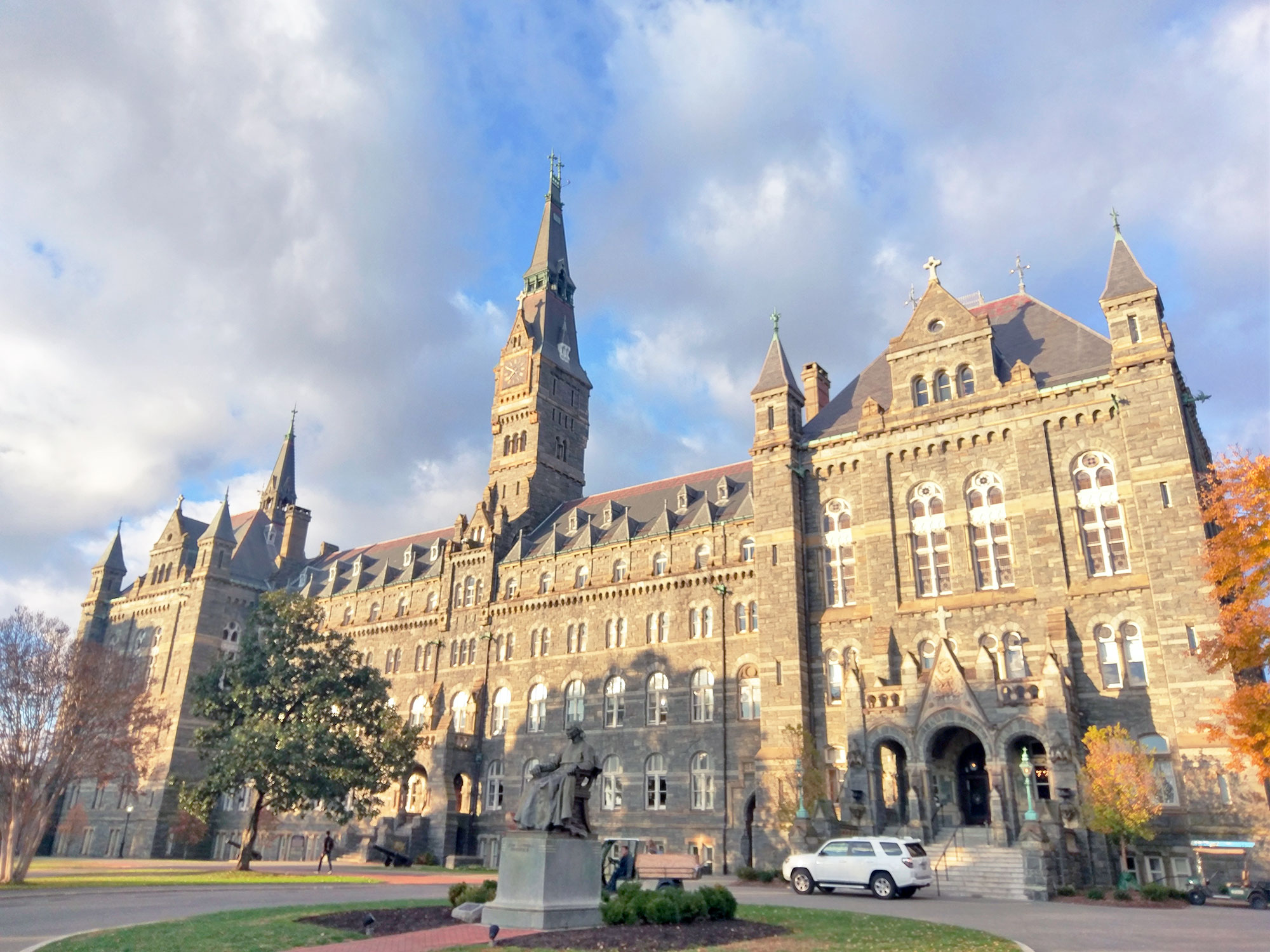One of the most surreal parts of my move to Washington D.C. a few months ago was listening to an audiobook of John Grisham’s Gray Mountain while driving through the Appalachians, where the story takes place.
It felt strange to inhabit the same space as fictional characters – particularly because I was traveling through an unfamiliar place in the middle of the night.

Driving through the Appalachian Mountains in Tennessee.
I had a similar moment recently while crossing the Key Bridge on my way to Georgetown’s main campus.
I was on the Georgetown bus while listening to Grisham’s The Rooster Bar. Just as my shuttle bus stalled in traffic, one of the book’s characters leapt off the same bridge during a traffic jam. Once again, a John Grisham audiobook made me feel like I was in the middle of a movie.
That was perhaps the most realistic part of this novel.
The Rooster Bar is about three students at the fictional Foggy Bottom Law School. It’s a slimy for-profit school which leaves its students saddled with debt and with horrible job prospects.
Although these types of law schools do exist, one major part of this novel keeps bothering me – the bizarre student loan situation.
The Foggy Bottom law students get hounded by student loan servicers even though they haven’t graduated yet. Moreover, the students are on a first-name basis with their assigned student loan account managers who routinely call to check in on their job hunt.
This is also apparently world without income-based repayment plans for federal graduate loans.

The student loan struggle is real, but I have never heard of a loan servicer corresponding with a graduate student before graduation. Additionally, income-based repayment plans should (in theory) make possible to avoid most of the shenanigans which happen in the story.
Other aspects of the book also seem off – for example, the students are so surprised by their dim employment prospects and their school’s low bar passage rate. That may have been a problem when I went to law school, but the American Bar Association has required standardized disclosures for years now (even in 2014, when the book takes place.)
Sure, people still continue to enroll in sketchy for-profit institutions, but they can’t claim ignorance like these characters.
I am halfway through the book and the plot keeps getting more ridiculous. Hopefully I’ll have enough fun run-ins with the book’s real locations around town to counterbalance the distracting inaccuracies.





No Comments